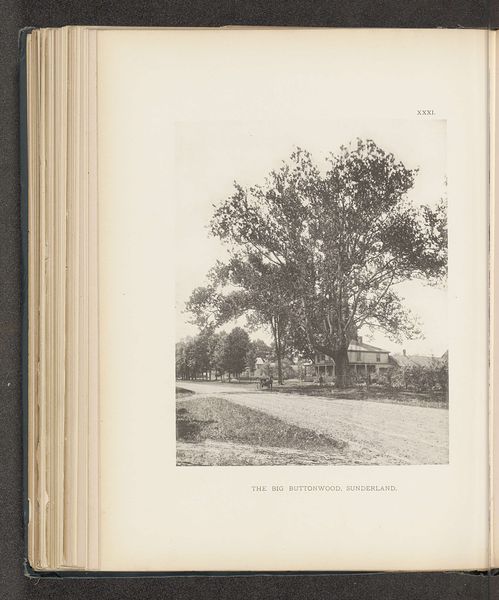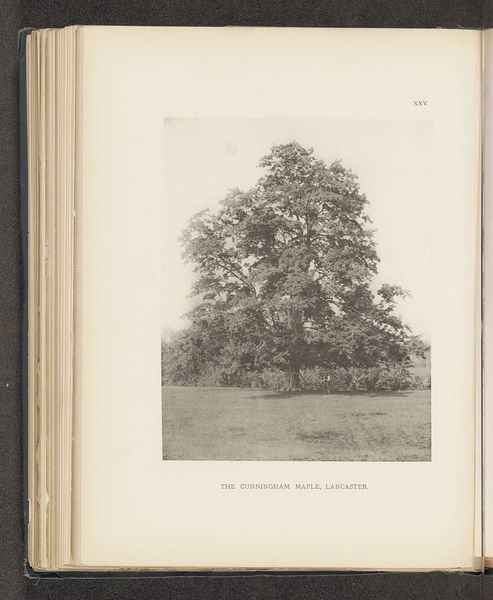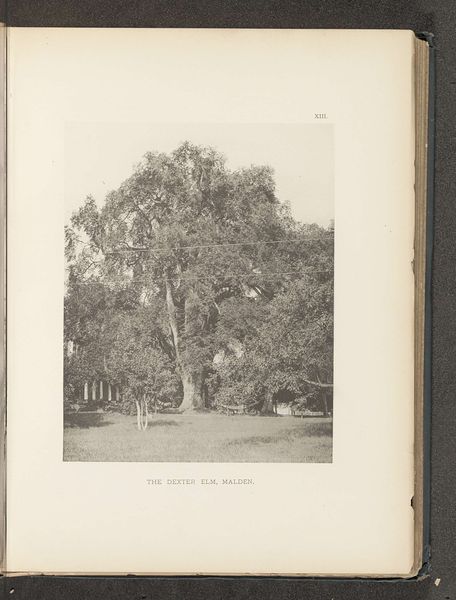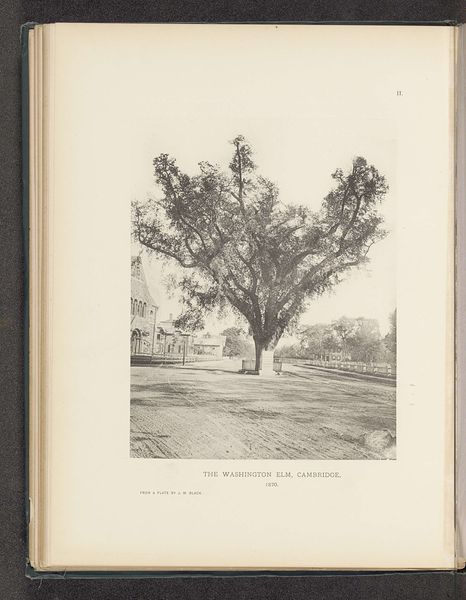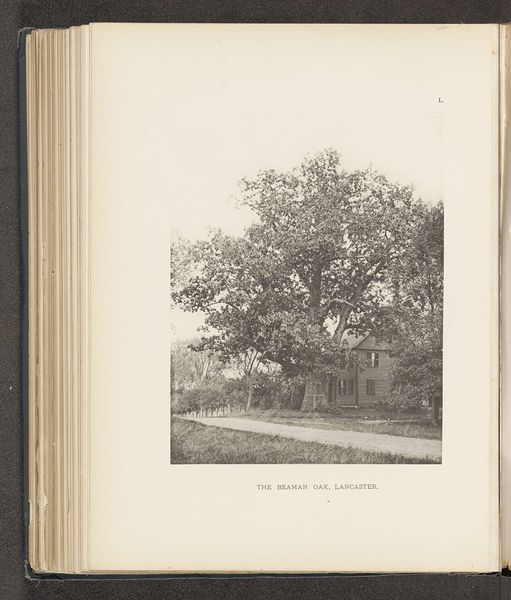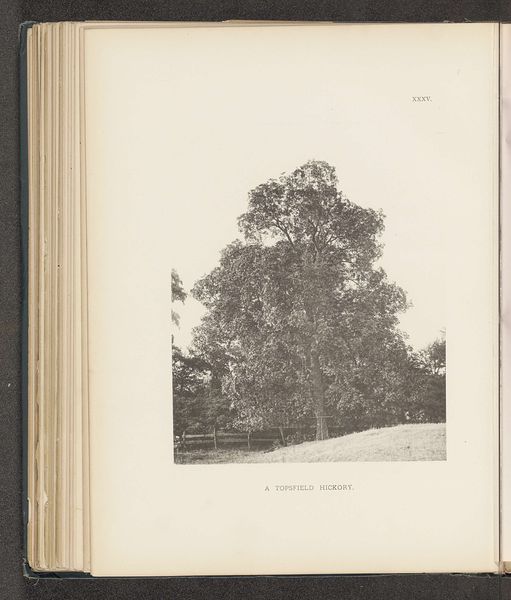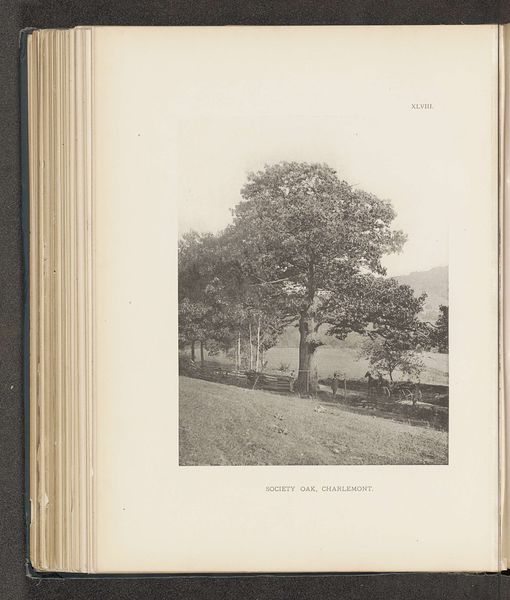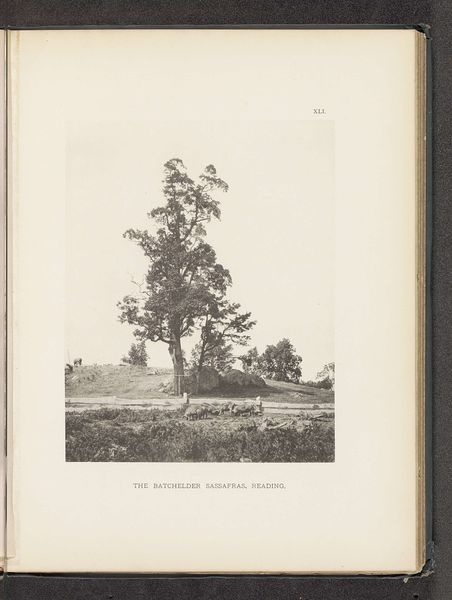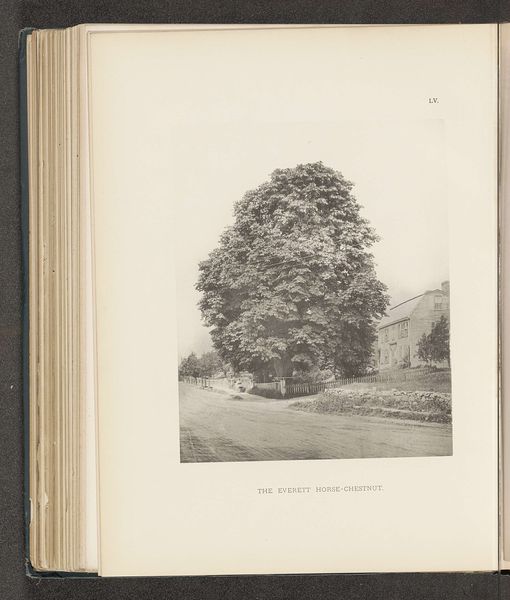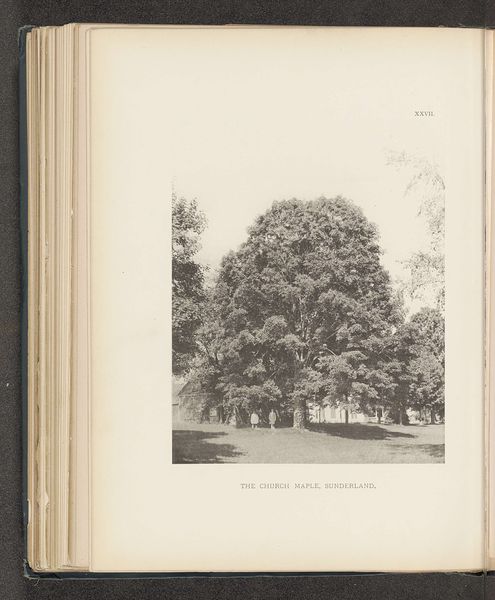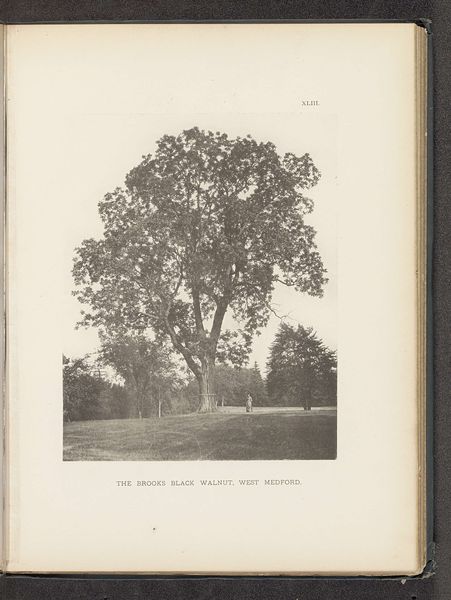
print, photography
# print
#
landscape
#
photography
#
realism
Dimensions: height 222 mm, width 175 mm
Copyright: Rijks Museum: Open Domain
Editor: So, this photograph is titled "The Newton Chestnut, Bernardston," and it was taken before 1890 by Henry Brooks. It’s a fairly straightforward shot of a large tree in a field. I'm struck by the texture of the tree’s foliage, and how it seems to fill the whole frame. What's your take on this work? Curator: Well, it's not just a straightforward landscape. Consider the physical print itself, the labor involved in its production and circulation at this time. Photography was becoming more accessible, impacting not only artistic expression but also documentation and industry. This image serves as a document of that shift, literally produced by a specific material process. Editor: I see what you mean. So, you’re less interested in the tree itself and more in how the image came to exist and what its existence meant. Curator: Precisely! Think about the materials – the paper, the chemicals, the printing process itself. These things speak to technological advancements and also raise questions about who had access to these technologies, what markets the image entered, and what this ease of distribution means. It affects painting because its techniques became popular with landscape artists interested in realism, as listed in the tags. Editor: That’s fascinating. I hadn’t really thought about the materials and distribution of something like this as being central to its meaning. Curator: Exactly. Instead of getting lost in aesthetics, let’s investigate the economic and social forces surrounding this print. Did images like this influence land use or perceptions of rural life? Understanding the process reveals a much richer context. Editor: It changes the way I see all art, really, thinking about the "how" as much as the "what". Curator: It gives the tree, and art as a whole, more substance.
Comments
No comments
Be the first to comment and join the conversation on the ultimate creative platform.
